Why you can trust Tom's Hardware
Performance isn't the only important metric when it comes to graphics cards. We also test power consumption using in-line monitoring tools and Powenetics software. We log power, clock speeds, temperatures, and fan speeds. We loop the Metro Exodus benchmark five times at 1440p ultra settings, and then run FurMark at 1600x900 for over 10 minutes.
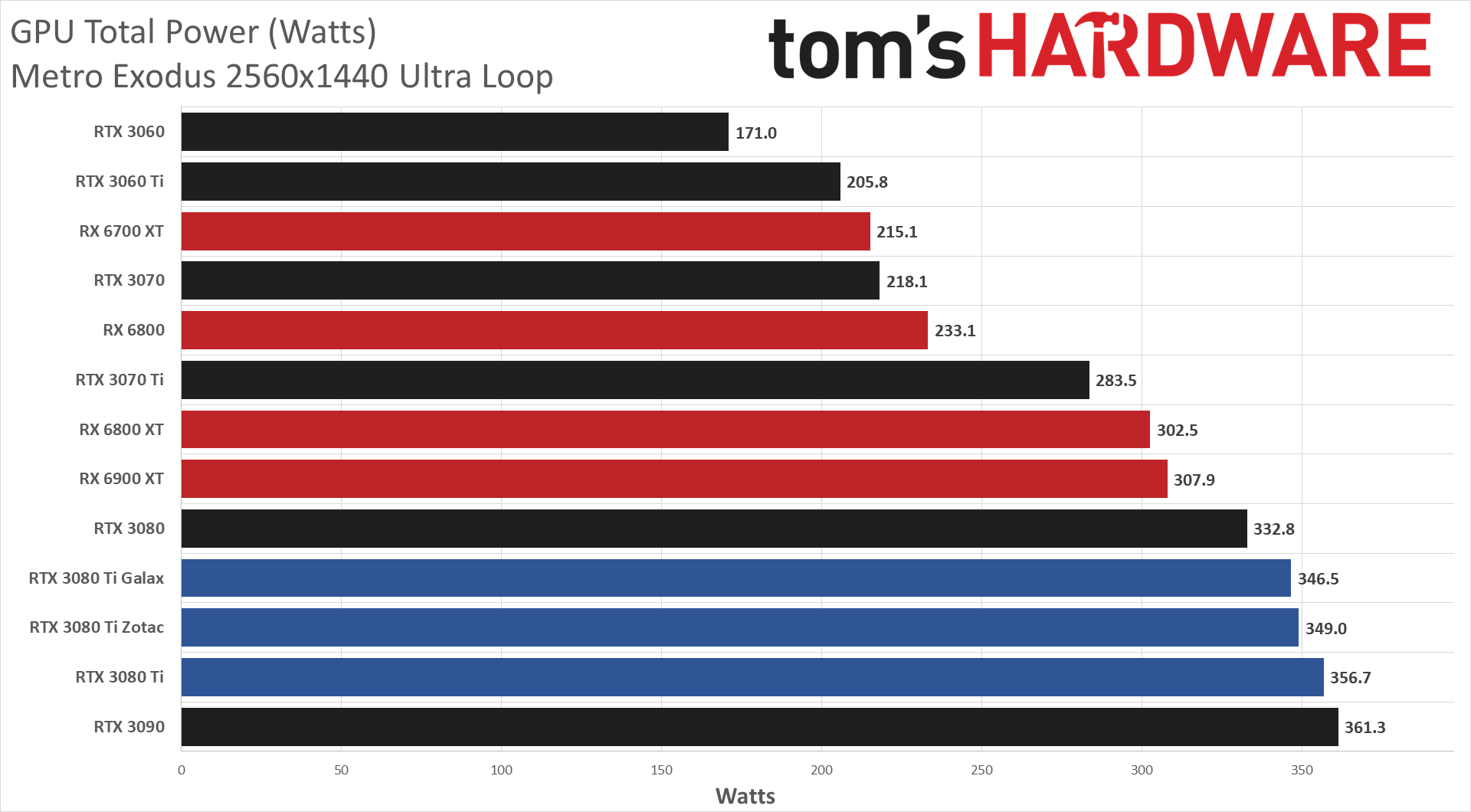
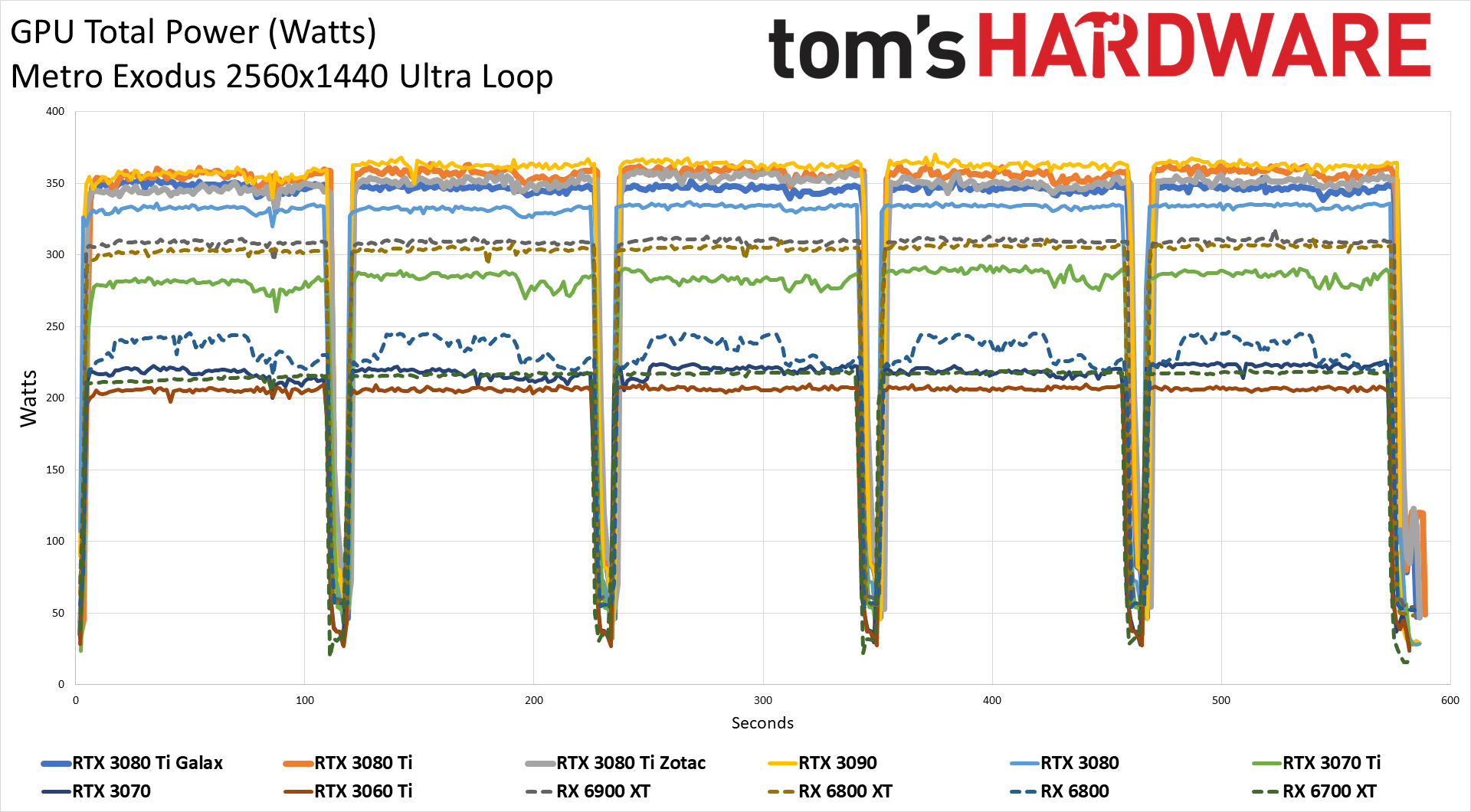
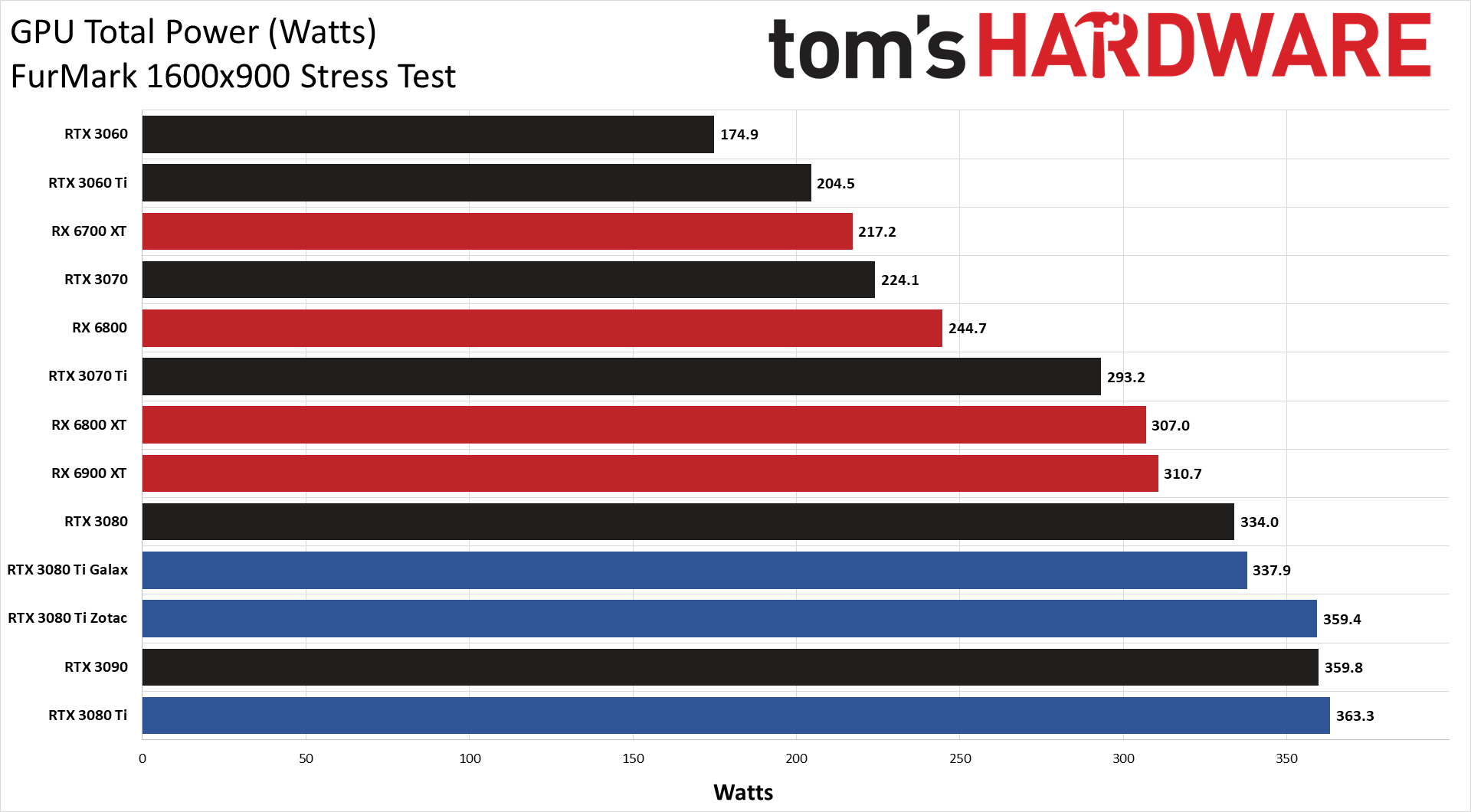
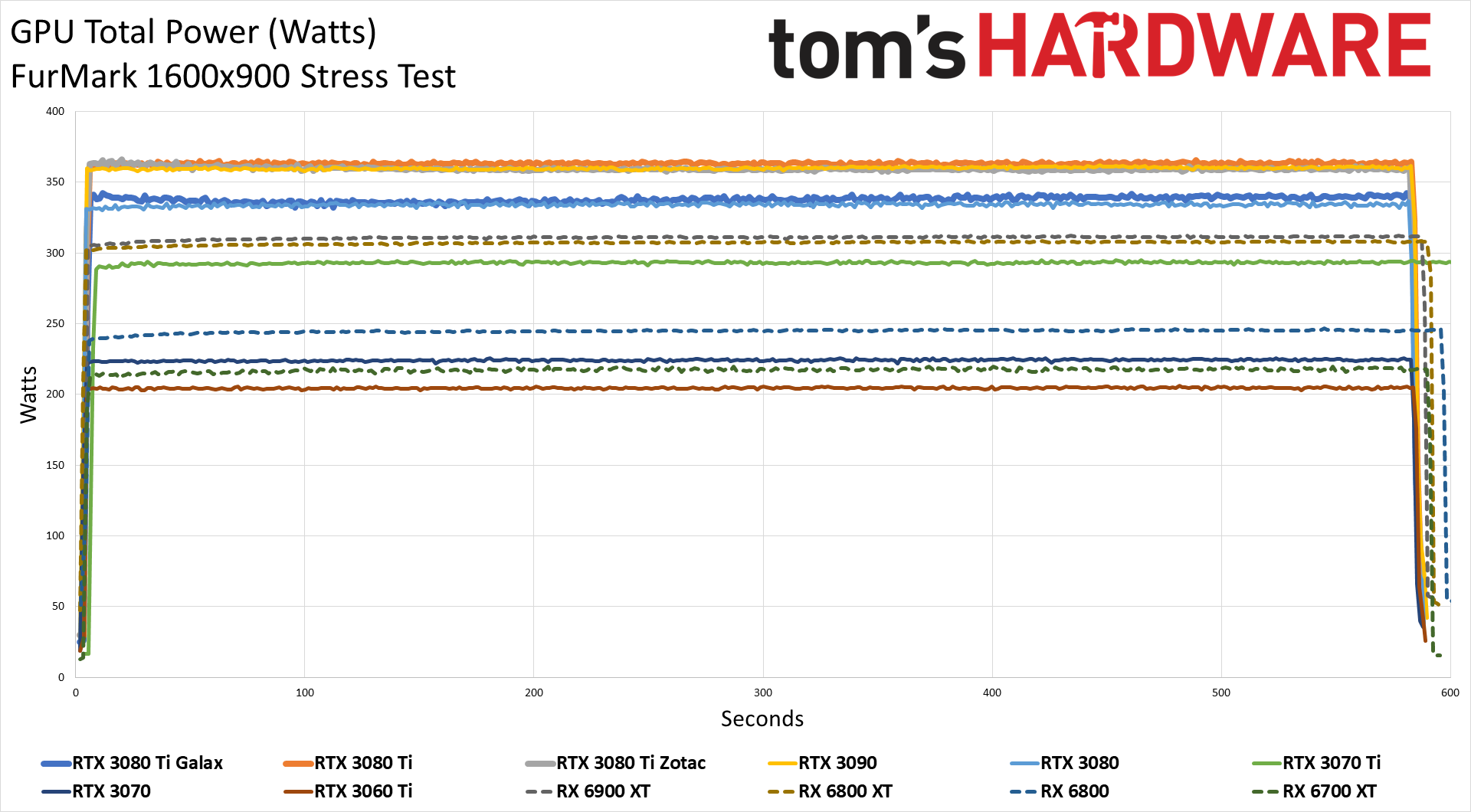
In a bit of a surprise, power consumption for the Galax 3080 Ti came in slightly lower than the other two RTX 3080 Ti cards. It's only 3W less than the Zotac card in Metro Exodus, but it's also about 10W less than the 3080 Ti Founders Edition. FurMark is more prone to kicking in varying levels of throttling, so while the Galax card used 20W less than the Zotac in that test, we have to look at clocks as well to determine what exactly was going on.
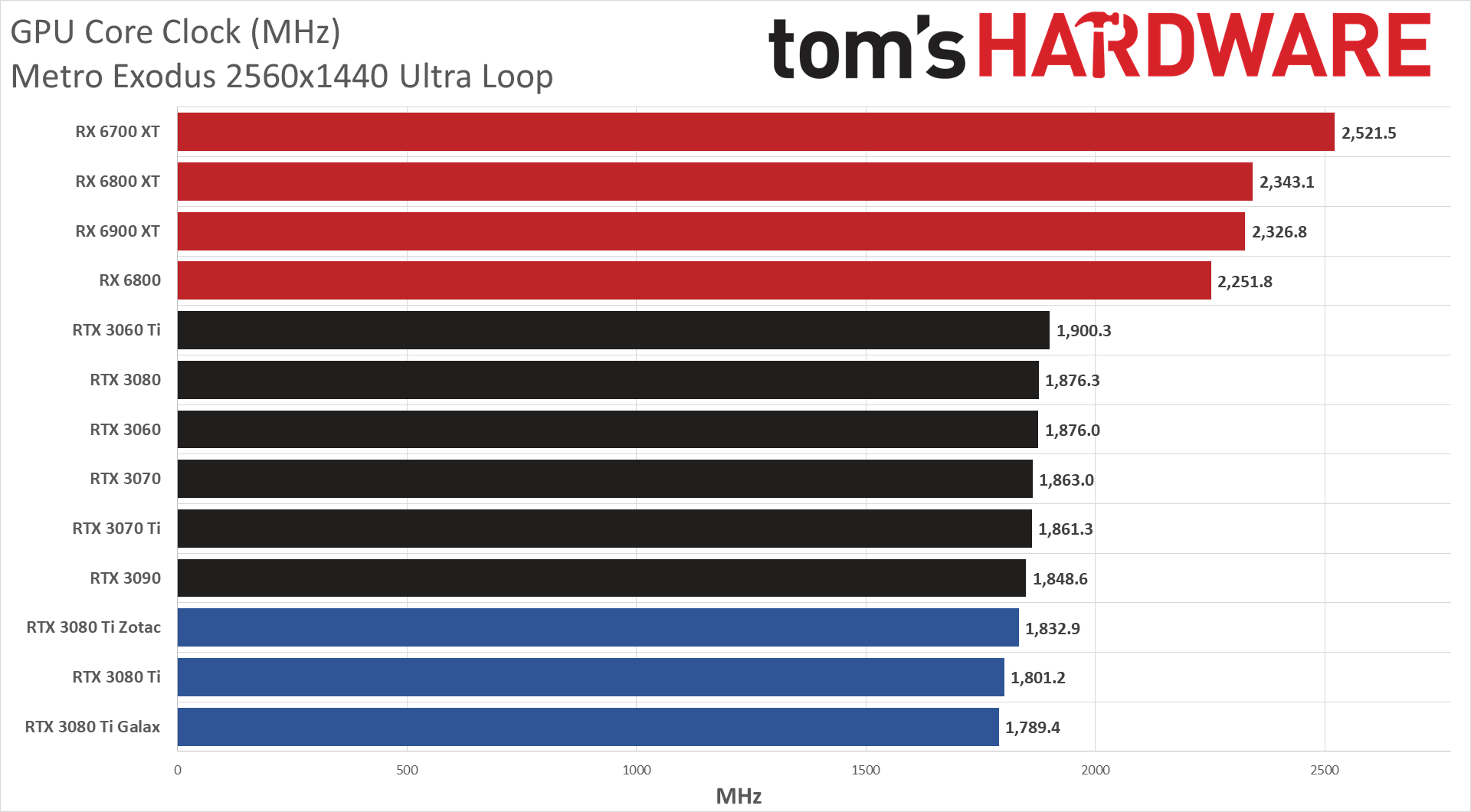
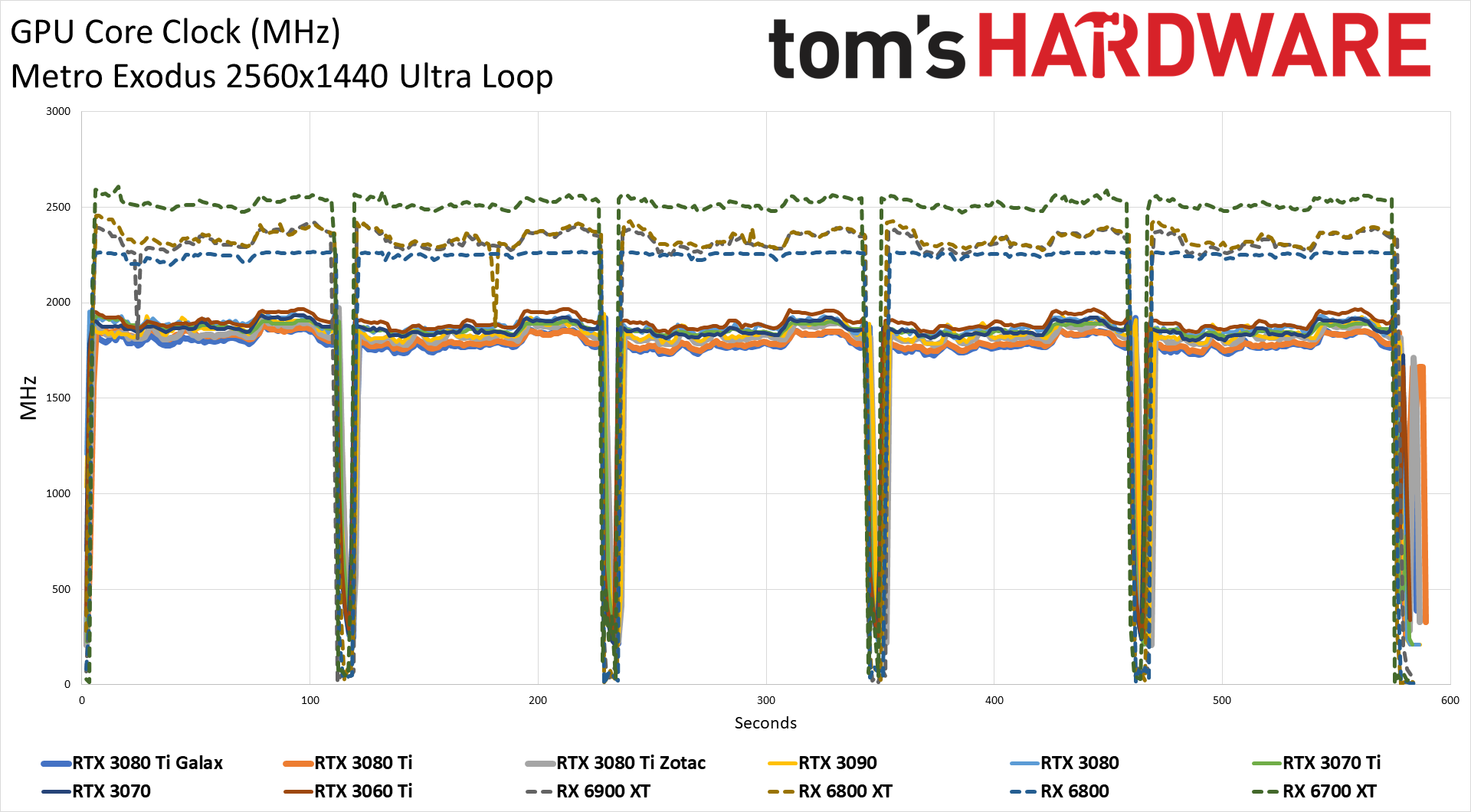
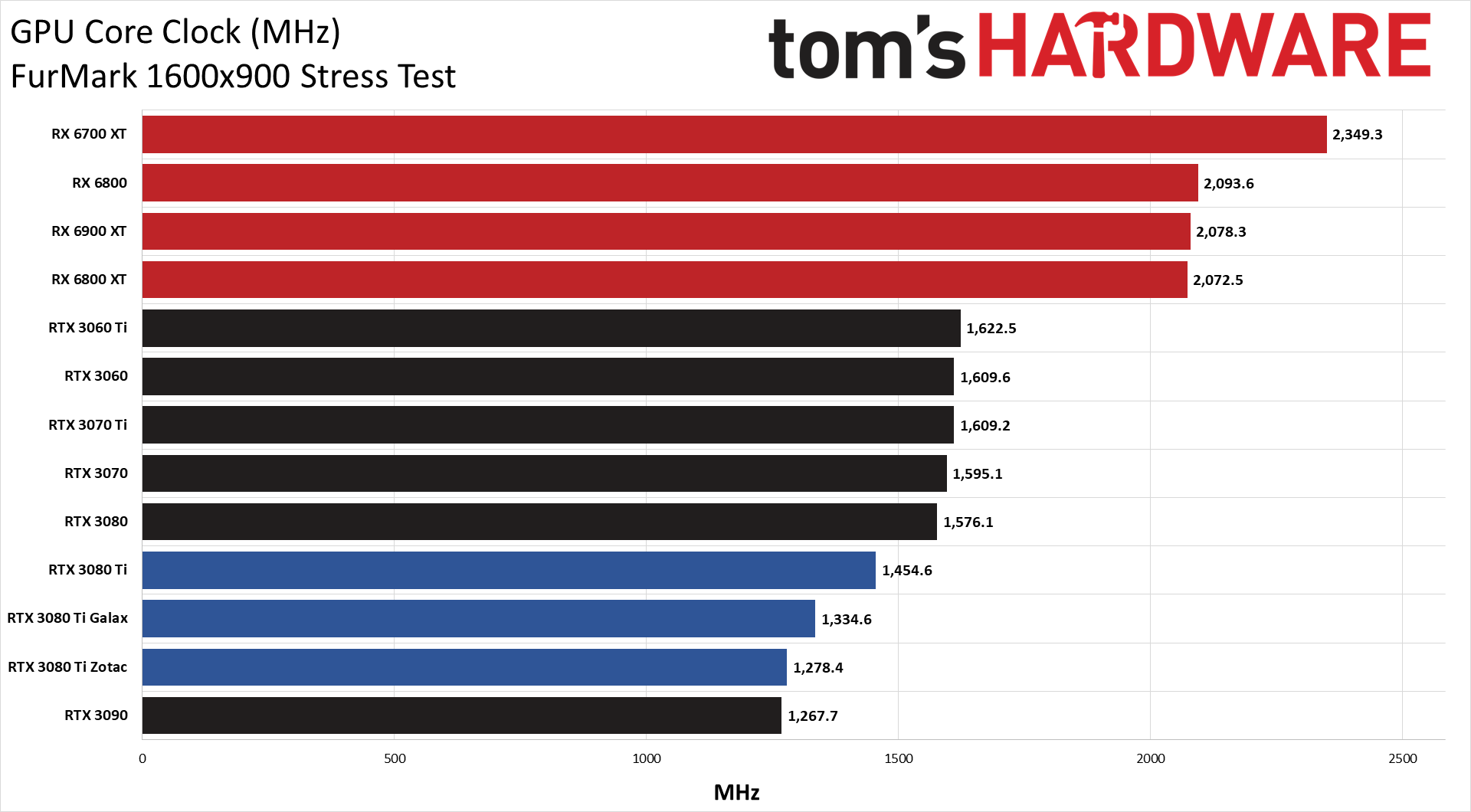
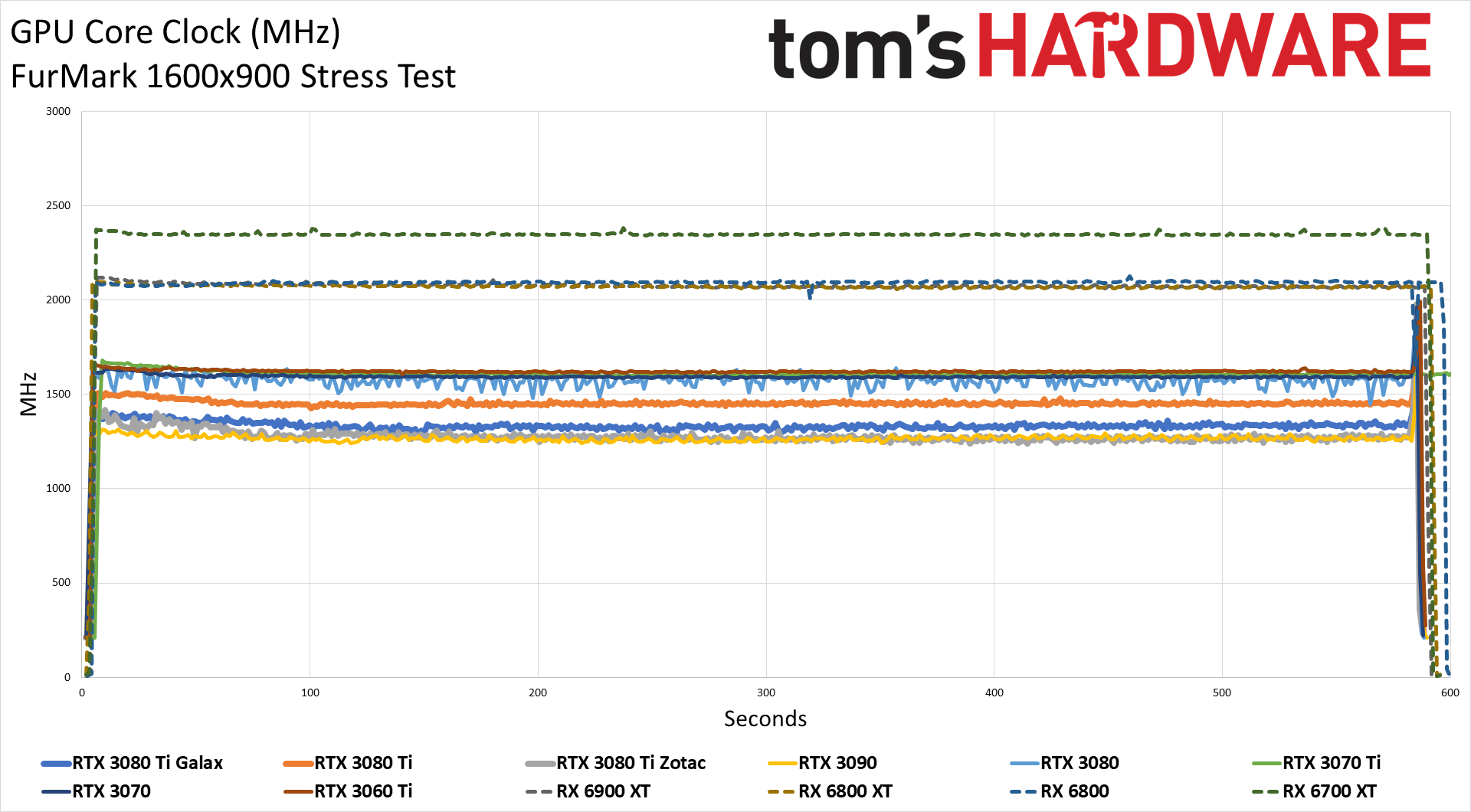
All of the 3080 Ti cards have the same 350W TDP, but the clocks and performance can be quite different. The Galax card averaged slightly lower clocks than the Zotac and Founders Edition cards in Metro Exodus, while in FurMark it landed between the Zotac and Founders Edition. The GPUs all exceed their stated boost clocks in Metro, but not by the same margins. The Founders Edition ran at 136 MHz over its nominal boost clock and the Zotac was 123 MHz above boost, but the Galax card only ran about 80 MHz higher than its boost clock.
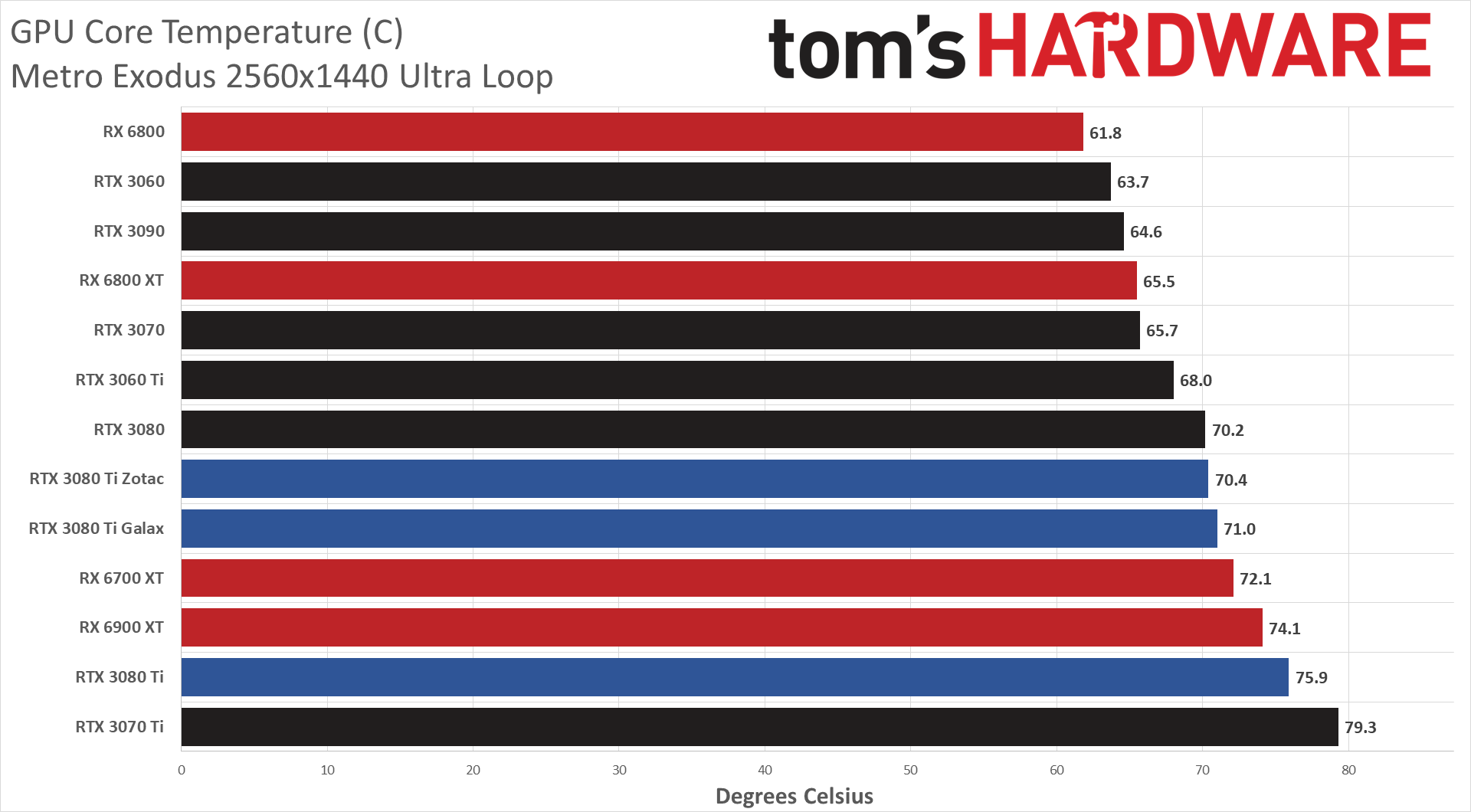
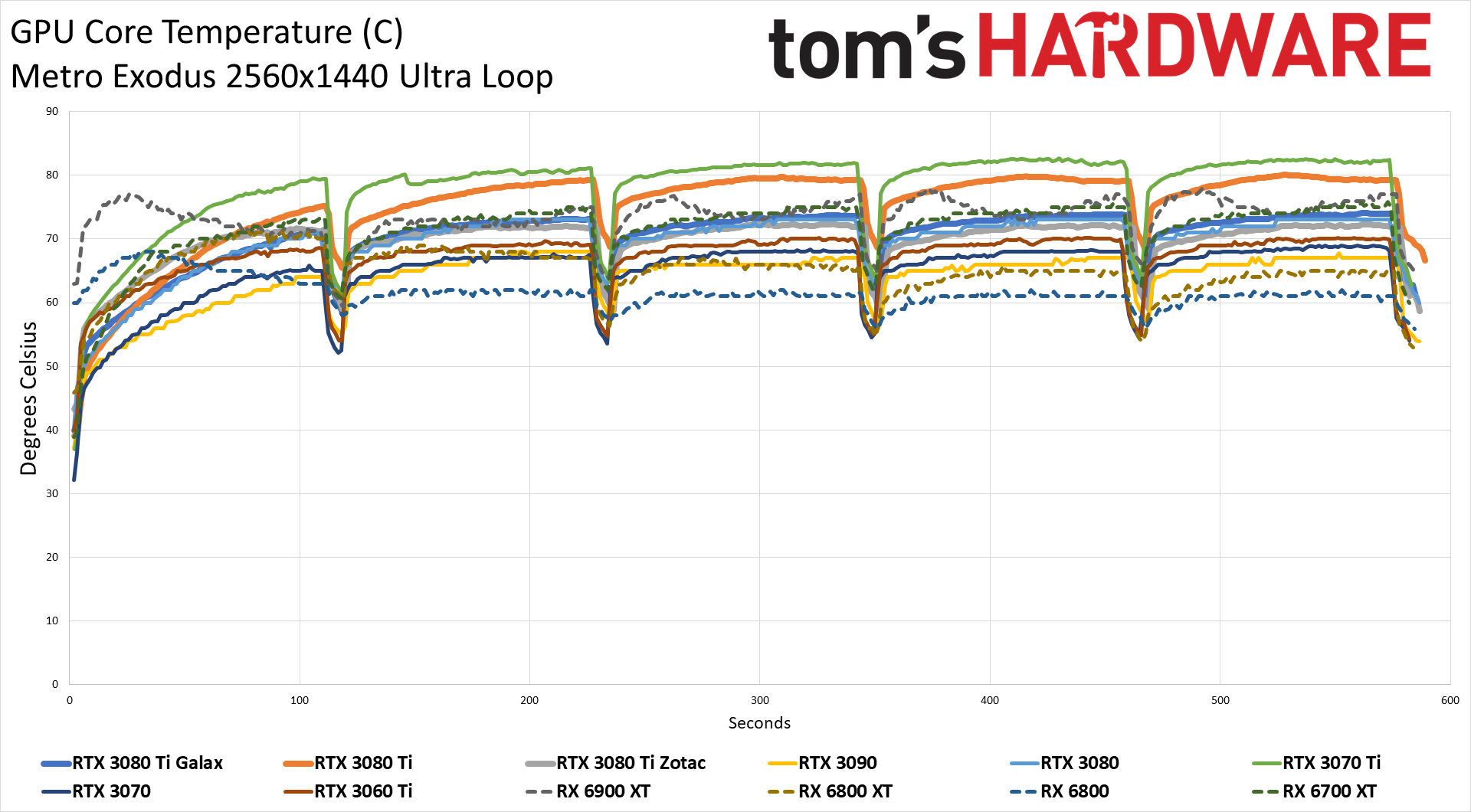
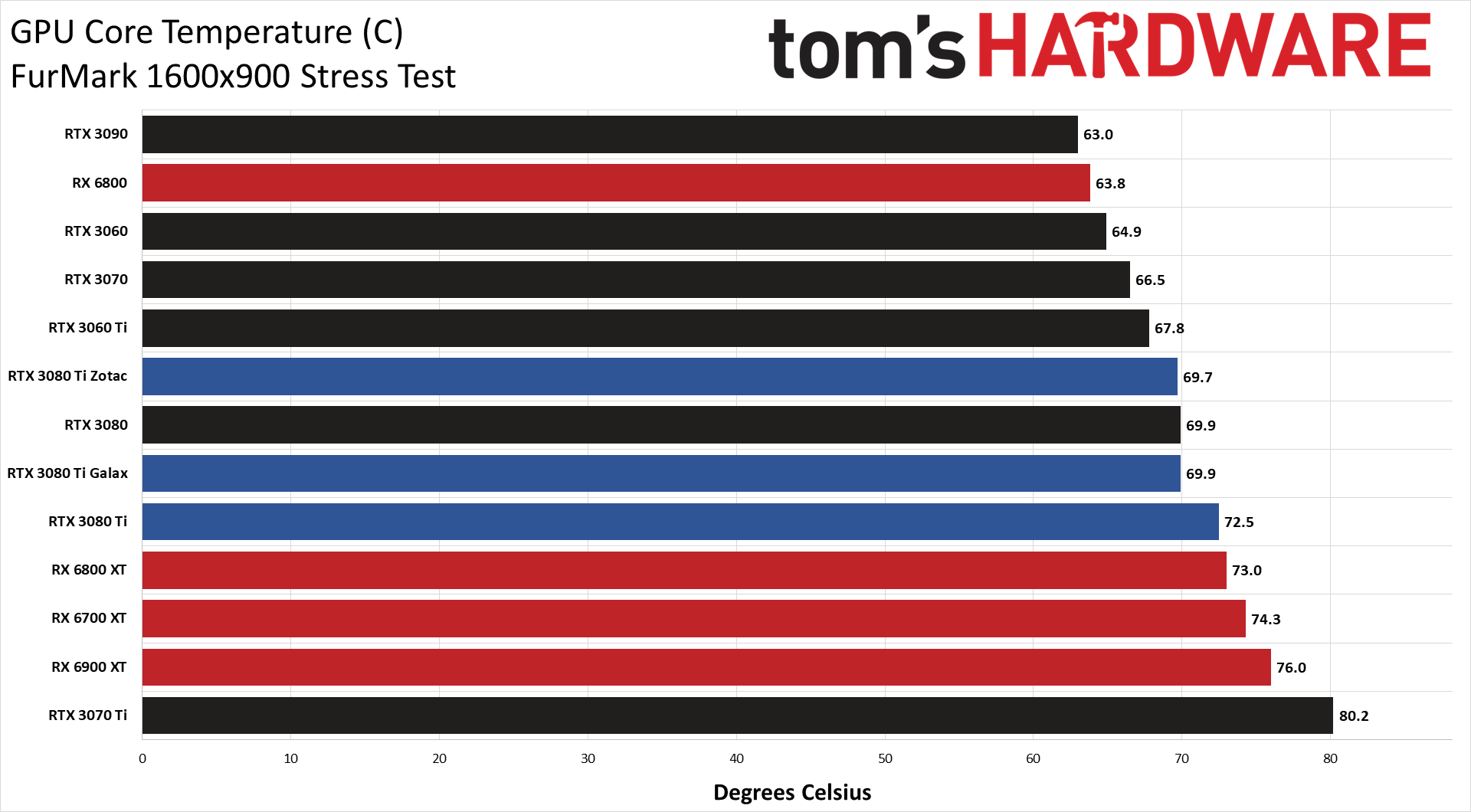
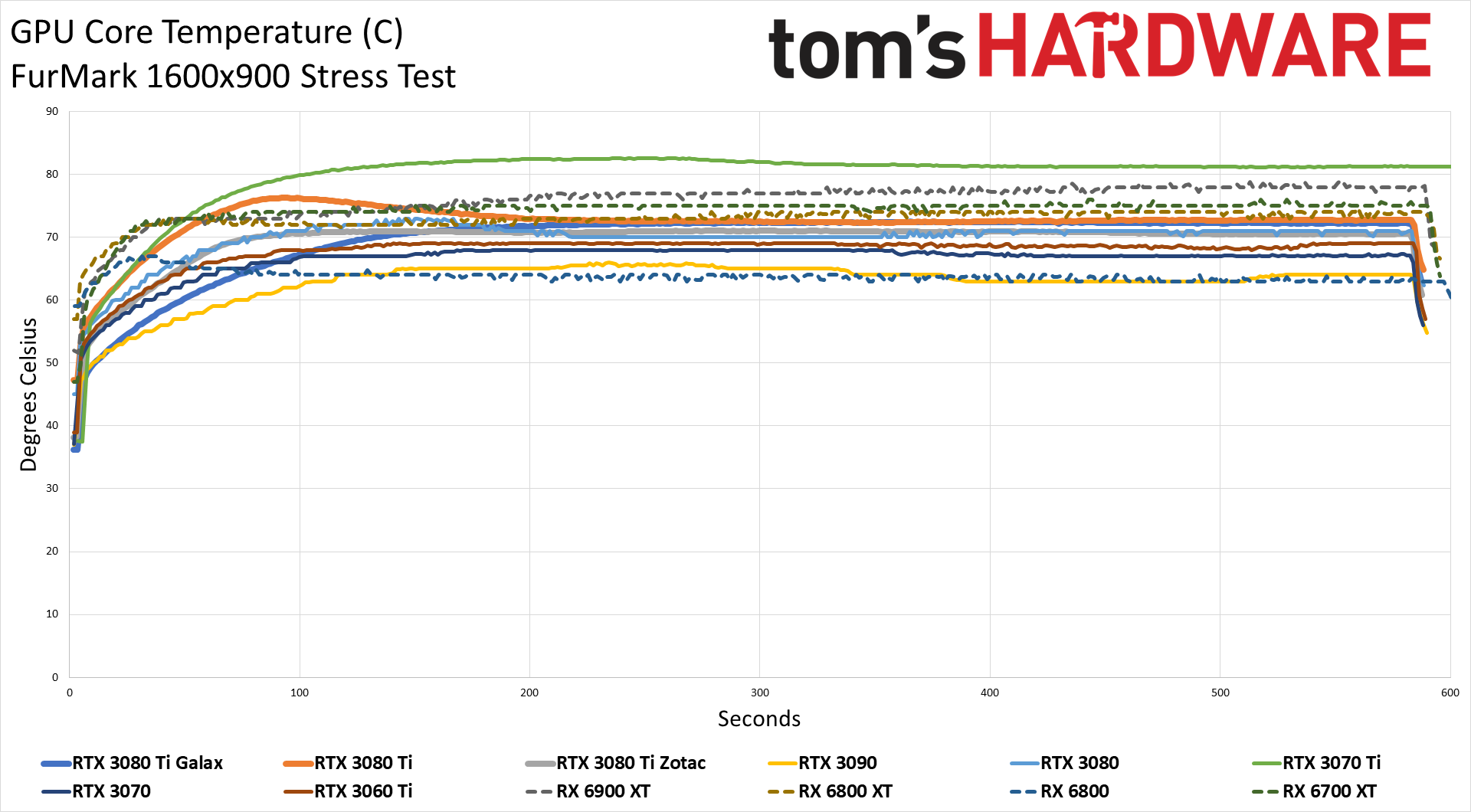
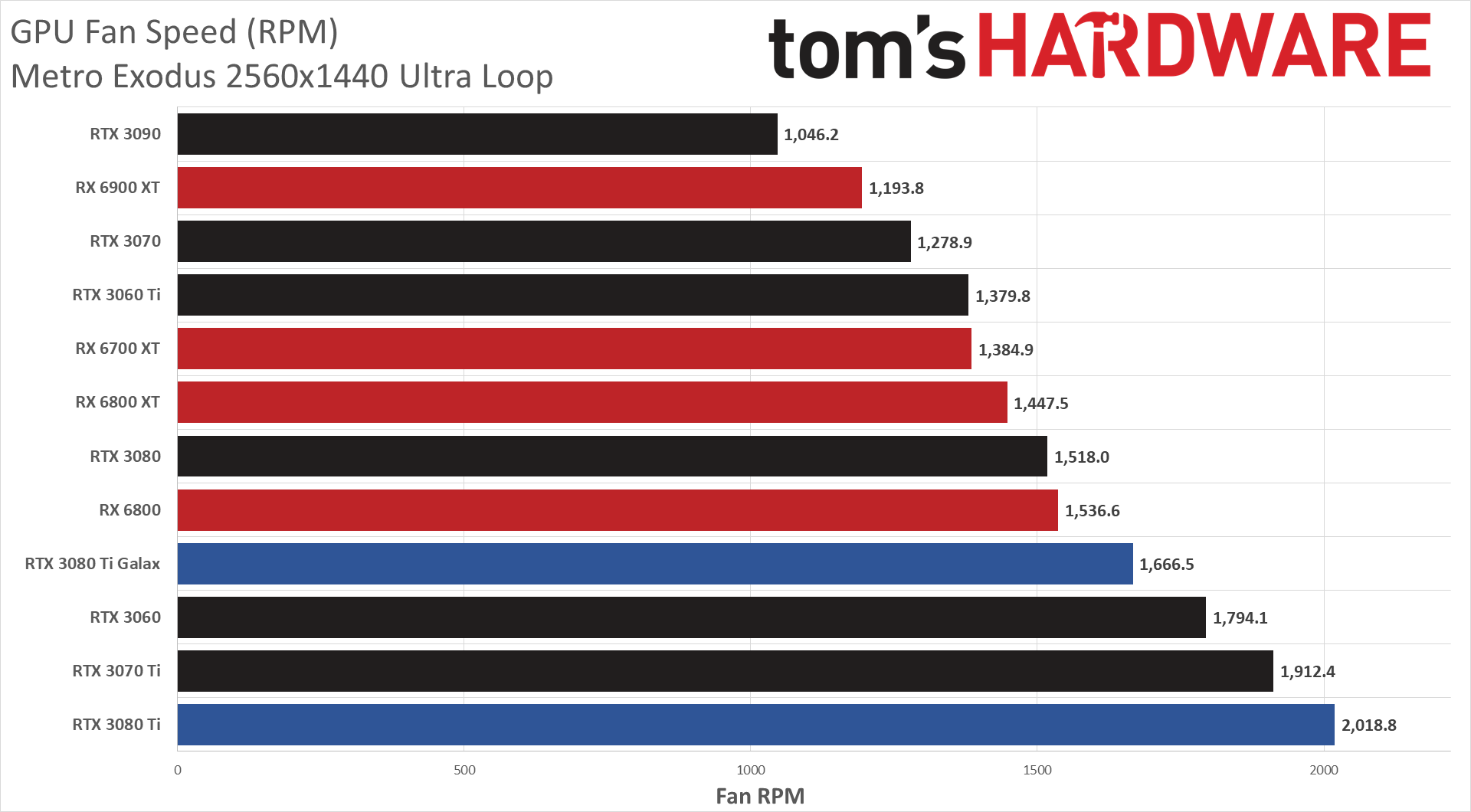
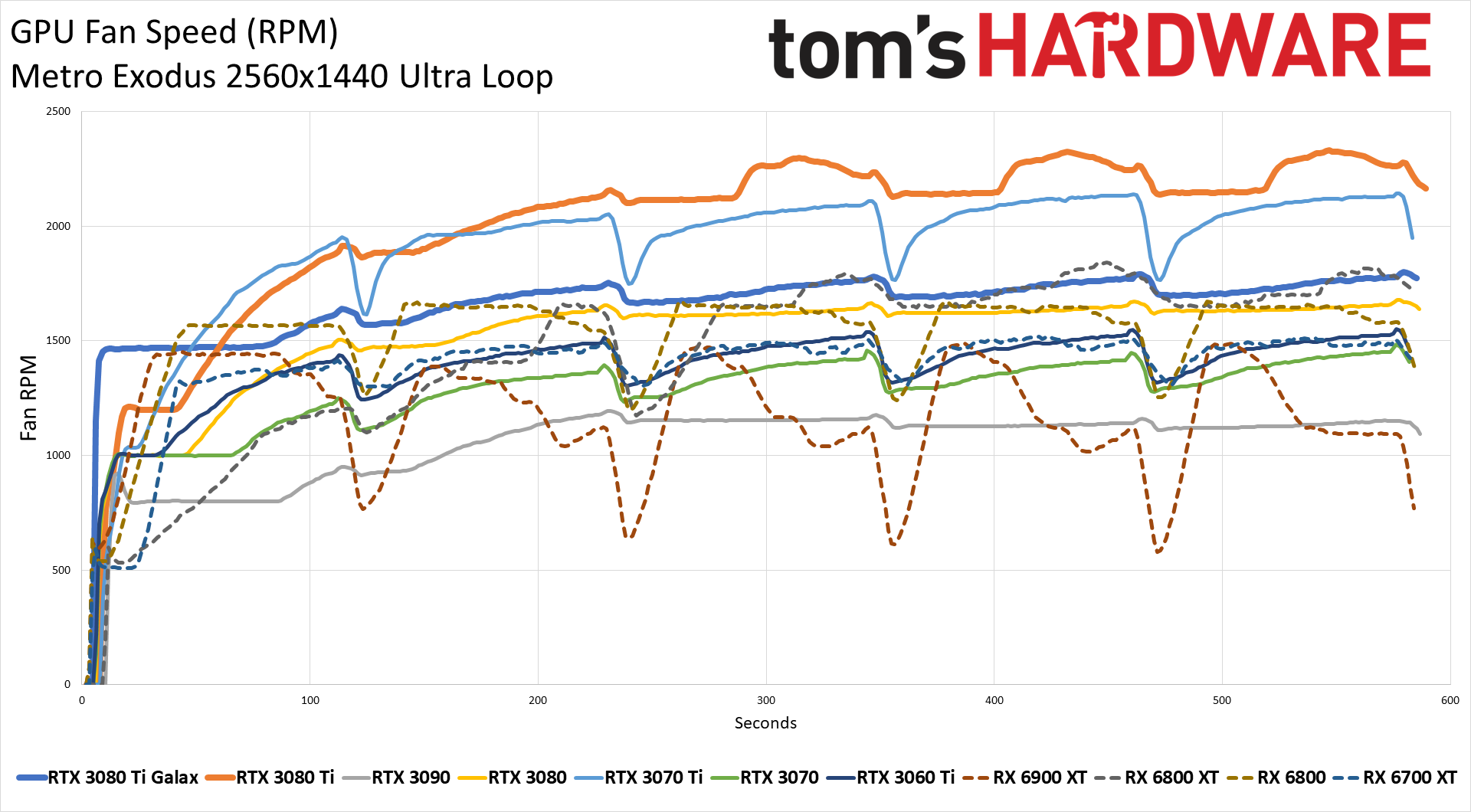
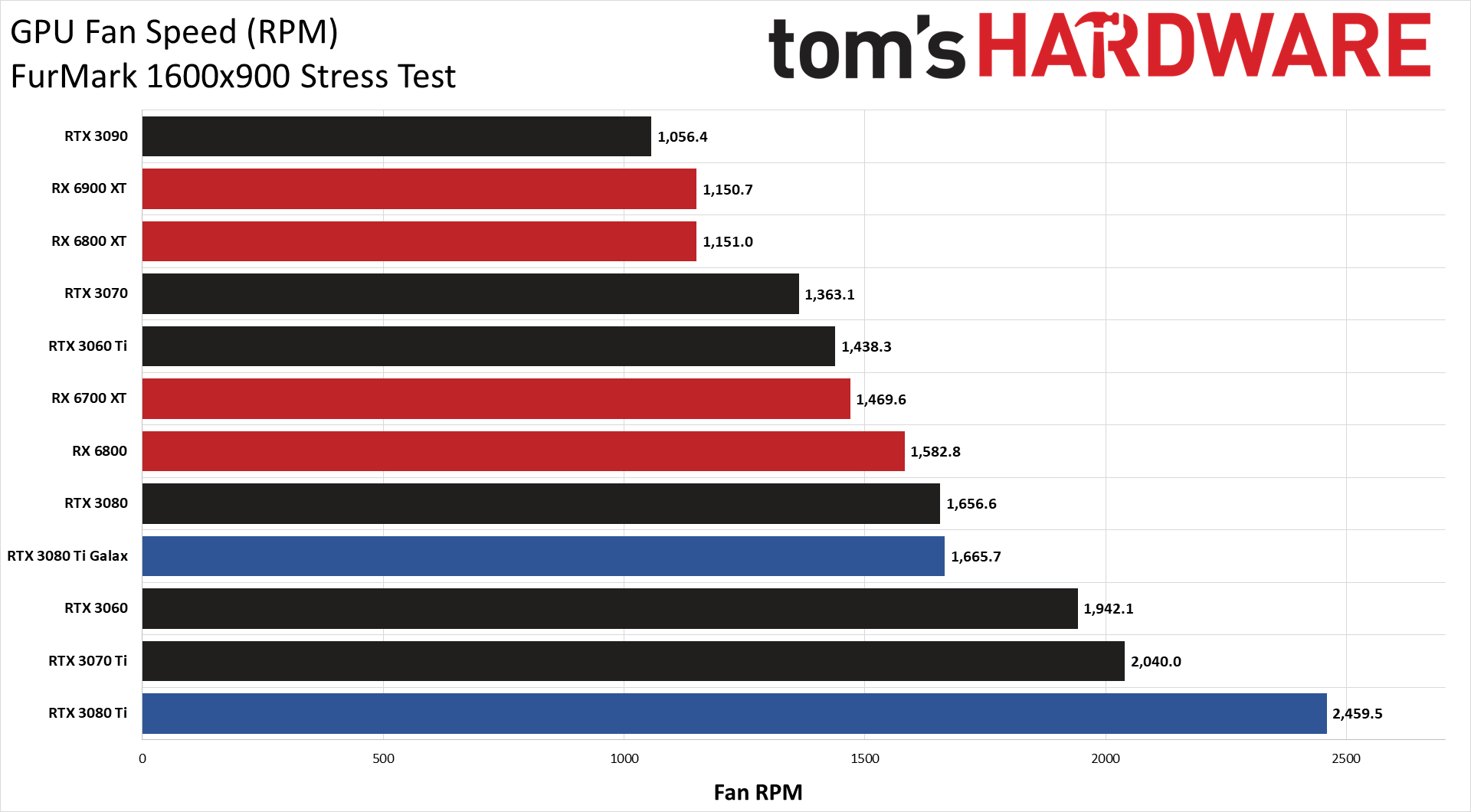
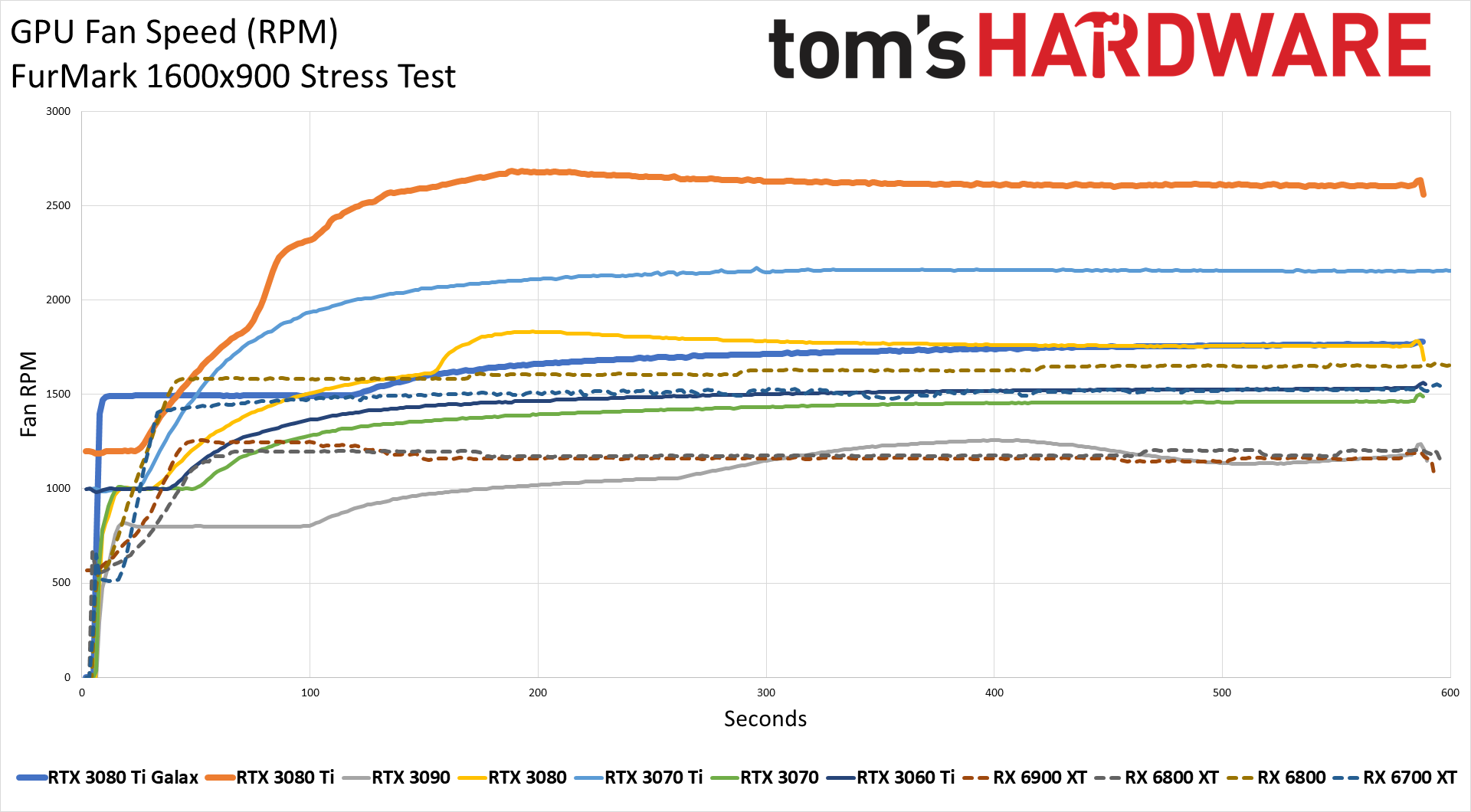
We had a problem collecting fan speeds on the 3080 Ti and 3070 Ti cards initially, but we've since sorted that out. Unfortunately, the Zotac card has moved on to other pastures (it will now be used for case testing), so it's not part of the fan speed results. Anyway, the temperature and fan speed results go hand in hand: Higher fan speeds yield lower temperatures, and vice versa. The Zotac and Galax cards are both substantially larger than the Founders Edition, and end up with similar temperatures, with lower fan speeds as well. In Metro, the Galax fans ran about 350 rpm lower than the Founders Edition, while the gap was 800 rpm in Furmark — though with lower clocks on the Galax card, so there are other factors at play.
The other part of the equation is VRAM temperatures. The larger coolers on the Galax and Zotac cards reduced temperatures a few degrees overall, but more importantly, peak GDDR6X temperatures were in the 90–92C range on the Galax card. The Zotac by comparison hovered at around 96C–98C, and the Founders Edition consistently hit 100C–104C.
We noise tested all three RTX 3080 Ti cards in the same test PC, with the SPL meter sitting about 10cm from the GPU fans. (Note that the testing environment has changed, so noise comparisons aren't necessarily identical to previous testing.) This was done to focus on the sound coming from just the GPU, rather than picking up other noise sources like that of the CPU cooler and case fans.
The Galax RTX 3080 Ti SG while running Metro Exodus settled down at 48.5 dB, while the Founders Edition ran at 52.0 dB (the Zotac, as already noted, was unavailable for retesting). Fan speeds for the two cards were 55% on the Galax and 66% on the Founders Edition — as we noted in the initial GeForce RTX 3080 Ti review, the Founders Edition definitely seems to struggle a bit with balancing cooling and fan speeds. As another point of reference, we used MSI Afterburner to set the fan speed to 75% on the cards, which is perhaps similar to what you'd need if you were doing 24/7 cryptomining. That gave noise levels of 56.3 dB on the Galax and 56.5 dB on the Founders Edition — though the Galax temperatures, particularly on the GDDR6X, would be lower based on our testing.
Get Tom's Hardware's best news and in-depth reviews, straight to your inbox.
MORE: Best Graphics Cards
MORE: GPU Benchmarks and Hierarchy
MORE: All Graphics Content
Current page: Galax GeForce RTX 3080 Ti SG Power, Clocks, and Temperatures
Prev Page Galax GeForce RTX 3080 Ti SG Gaming Benchmarks Next Page Galax GeForce RTX 3080 Ti SG: Still Overpriced but With Good Cooling
Jarred Walton is a senior editor at Tom's Hardware focusing on everything GPU. He has been working as a tech journalist since 2004, writing for AnandTech, Maximum PC, and PC Gamer. From the first S3 Virge '3D decelerators' to today's GPUs, Jarred keeps up with all the latest graphics trends and is the one to ask about game performance.